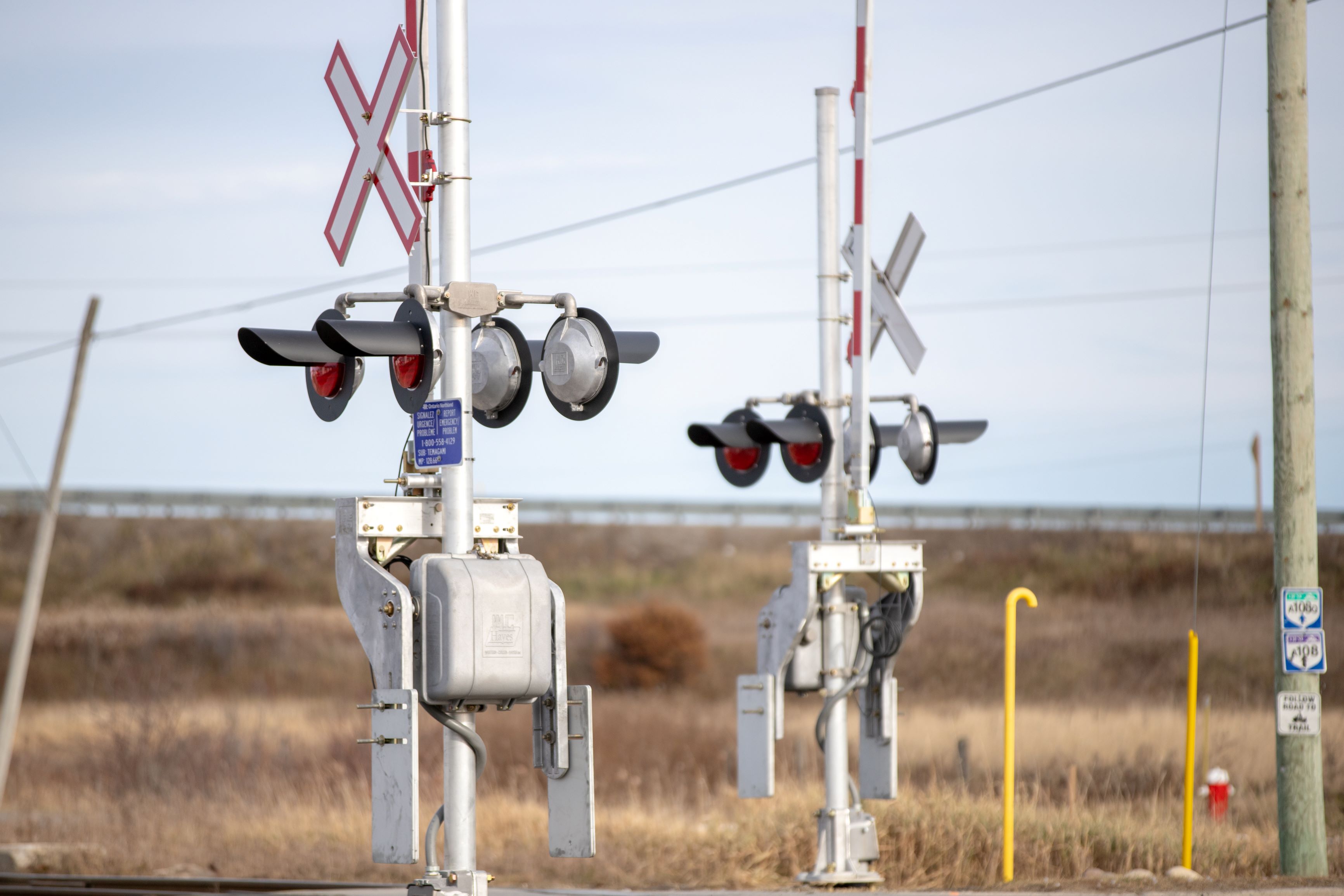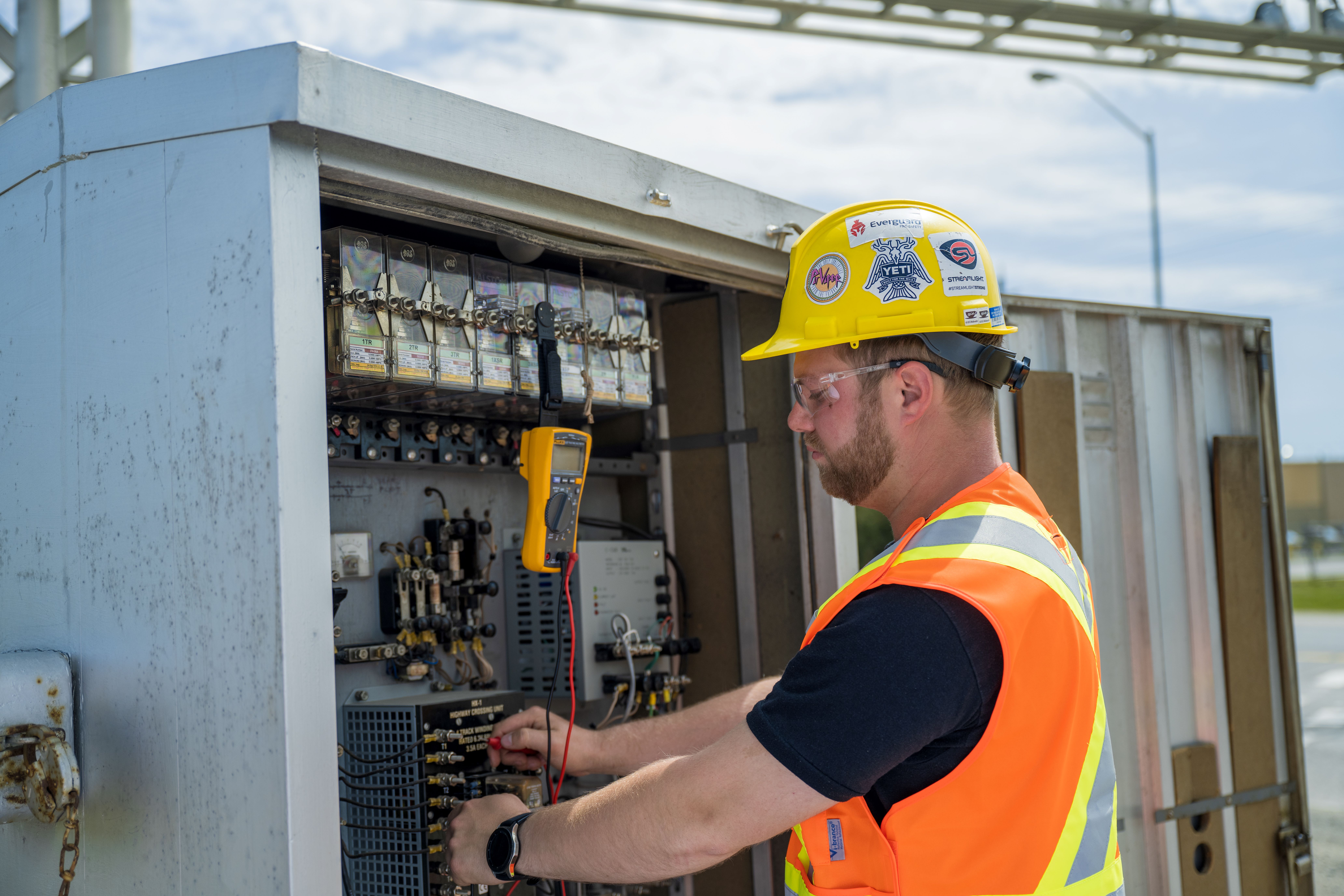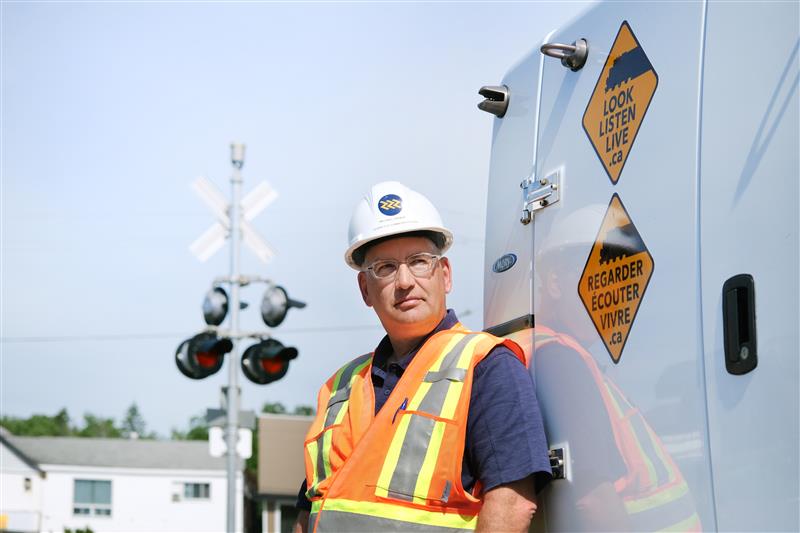Signals and Crossings

Ontario Northland prioritizes community safety around all railway crossings by employing comprehensive warning systems to alert drivers, pedestrians, and other road users of approaching trains. These systems are crucial for preventing accidents and ensuring smooth traffic flow.
Key Components of Warning Systems:
- Signals and Lights: Flashing red lights and audible alarms activate when a train is approaching, providing clear warnings to those nearby.
- Gates/Barriers: Automatic barriers or gates lower to block traffic, ensuring no crossing occurs until it is safe.
- Signage: Warning signs are placed in advance of crossings to inform drivers, with some signs offering real-time train schedule information.
- Sensors and Detectors: These devices detect the presence and speed of approaching trains, triggering the warning system.
- Communication Systems: In certain areas, crossing systems are integrated with communication networks for real-time updates and alerts to transportation management centers.
Importance of Crossing Warning Systems:
- Preventing Accidents: The primary function is to avert collisions between trains and vehicles or pedestrians, as trains cannot stop quickly.
- Ensuring Traffic Flow: Efficient crossing systems help maintain smooth traffic movement when no trains are present, reducing delays.
- Safety for Pedestrians: Dedicated pedestrian gates and signals provide immediate warnings, enhancing safety for those on foot.
Ontario Northland remains dedicated to maintaining the highest standards of safety at all railway crossings.

Rail Safety/ Operation Lifesaver
Ontario Northland has partnered with Operation Lifesaver, a national public education campaign focused on preventing railway-related incidents, to promote rail safety in Northern Ontario. In 2022, Ontario Northland took a proactive step by outfitting all Rail Infrastructure Department vehicles with decals displaying the message, "Look, Listen, Live." This initiative, spearheaded by signal maintainer Shawn Harman, was recognized for its effectiveness in spreading awareness at a low cost. The decals, placed on highly visible vehicles, serve as a constant reminder to the public about the importance of rail safety. Operation Lifesaver praised the initiative and even featured it in their annual report, highlighting Ontario Northland's commitment to safety in the communities it serves.
